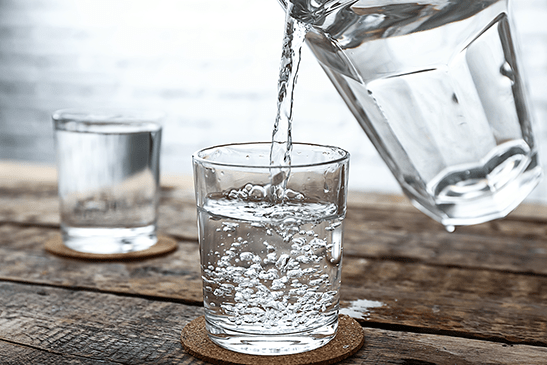
For the health conscious, there is little more uncomfortable and annoying than muscle pain after a workout. Muscle pain is one of the most common side effects of overexertion or performing an exercise improperly. No matter how light or intense your exercise routine is, there’s a good chance you’ll experience muscle aches and pains that may range from mild to very painful. If you’re not used to regular exercise, there’s a good chance you will experience muscle pains when you first begin exercising.
In addition to overexertion, there are a number other factors that may lead to muscle pain, such as autoimmune disorders ( lupus , dermatomyositis, and polymyositis), viral and bacterial infections (flu and polio), chronic fatigue syndrome, low potassium count or hypokalemia.
What is Delayed-Onset Muscle Soreness (DOMS)
Delayed-onset muscle soreness is commonly referred to as muscle pain. It means that during your workout you did some damage to your muscle tissue. When this occurs, your body responds accordingly to repair the damaged tissues by triggering inflammation, protecting the injured area and enabling repair to begin. This repair process puts additional pressure on the injured muscles, causing the pain and tightness you’re feeling. Muscle pain typically occurs 12 to 24 hours after you perform a physical activity.
While poor exercise technique or overexertion may be responsible for a majority of muscle pain, it’s necessary to look for signs or symptoms of a more serious underlying cause. Some health conditions cause muscle pains and aches, such as low potassium count or infections from viruses or bacteria. If you’re experiencing muscle pain that isn’t improving for more than two days, you should book an appointment with your doctor immediately.
6 Methods for Easing Muscle Pains At Home

Your muscles need time to recuperate from the stress of exercise. There are no magic tricks to heal fast, but fret not. There are some simple things you can do at home to relieve muscle soreness.
1) Hydrate, Hydrate, Hydrate
One of the most effective ways to help speed muscle recovery is staying hydrated. Being properly hydrated can help ease inflammation, eliminate toxins, and supply the nutrients your muscles need.
Dehydration hampers vital functions of the body, from breathing to digestion, and places pressure on or causes damage to the muscles or organs. It's necessary to replenish your body with plenty of fluids during and after a workout to ensure that you do not become dehydrated.
On average, adults lose around 2.5 to 3 litres of water a day, so require around 8-10 glasses of water a day to replenish those stores. If you're losing more fluids than usual through exercise and sweating, you’ll need to drink beyond the recommended amount of water.
2) Eat Healthy Food To Recover Faster
In most situations your muscles won't recover as fast as normal if you're hungry or not eating the right kind of food. It's suggested to include protein and carbohydrates in your diet. Protein has amino acids that are important for repairing and building muscle tissue, while carbohydrates play a vital role in giving fuel to your muscles during your exercise. Prioritizing meals and making sure that you are ingesting adequate protein daily will help feed your muscle tissues a constant supply of amino acids.
Essential vitamins and minerals such as Vitamin C and zinc also have roles in promoting recovery. These are readily found in fruit, vegetables and legumes. While eating healthy food is very vital in the recovery process, taking over-the-counter pain relievers like ibuprofen or booster products like Medterra CBD may help ease muscle pain as well.
3) Get 8 Hours of Sleep
Another way to help alleviate muscle soreness is to rest the part of the body that's aching. There are a number of things that happen in your body when you’re asleep, including the regeneration of cells and the restoration of the damaged tissues. Having eight hours of sleep is important .
Not getting enough sleep can slow the process of muscle recovery, as without enough sleep the number of inflammatory cells may increase and immune cells may decrease.
4) Rest the Day After
Having another intense workout when you are already suffering muscle pain may cause greater stress to your body and exacerbate the problem. It's better to alternate high-intensity workouts with other exercises, such as restorative yoga, an easy walk, cycling, or light training. It's essential to cool down and avoid doing heavy exercise if you’re already in pain, so that you don’t cause extra damage to the muscle tissues.
5) Apply Hot or Cold Therapy
There’s an on-going discussion about hot and cold therapy, but it's up to you which you’d like to try. Note that this form of therapy is only temporary even as it feels better to have instant relief from sore muscles.
Cold therapy (such as cold packs and cold baths) may help reduce muscle pain and inflammation by reducing blood flow to the affected area. Elevating the affected limb (your legs for example) can help speed the reduction in inflammation. Alternately, heat therapy (hot packs, baths, saunas and the like) promoted blood flow, helping muscles to relax, thereby reducing tension. Hydrotherapy , or exercise in water, may also be recommended for relieving pain and rehabilitating damaged muscles.
6) Use a Foam-Roll After Exercise
Foam rolling after exercise may help reduce the intensity of muscle aches by improving circulation and decreasing muscle tensions. Using a foam roller offers similar results to having a massage, such as reducing muscle tension, improving blood flow and easing inflammation.
Foam rollers, lacrosse balls, massage sticks, and CBD are just some of the innovative new at home treatments that may help anyone experiencing muscle soreness after exercise find some relief. In the changing tech landscape of the medical industry, at home remedies for muscle pain can bring relief to more people than ever before.